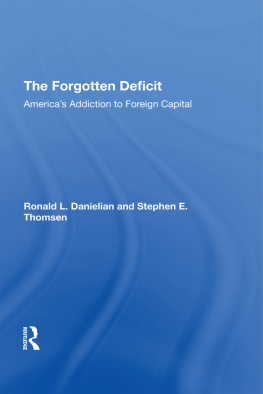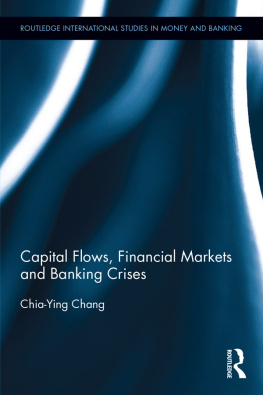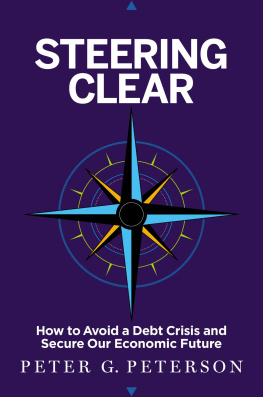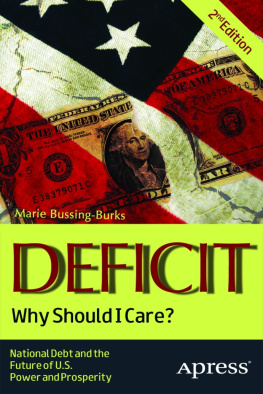The Forgotten Deficit
Americas Addiction to Foreign Capital
About the International Economic Policy Association
The International Economic Policy Association, founded in 1957, was the first organization in Washington chartered exclusively to advocate international economic policies of benefit to the nation and American business. It has an ongoing program of researching international balance of payments issues and relating their importance to the well-being of the country. The lack of understanding of the U.S. international payments problem continues to lead to policies which affect the economic strength of our nation and its citizens. In order to shape the debate and build a factual record, the Association carries on a program which analyzes the U.S. balance of payments, U.S. trade and foreign investments, raw materials and international tax problems, and the effects of multinational corporations upon world commerce. IEPA has built its reputation on its expertise in those areas that affect international business and Americas position in the world political economy. The Associations support comes entirely from its mentors who are major U.S.-based multinational corporations. It receives no foreign funding for its reports.
About the Book
The United States is the worlds largest debtor nation. An often-overlooked element of the deficit, U.S. capital accounts, is the focus of this critical analysis. The evidence shows that the inflow of foreign money to finance U.S. consumption is going into short- and medium-term, interest-rate-sensitive, liquid instruments. U.S. debt instruments, rather than equities, are the asset of choice.
The authors argue that over the long term this trend will adversely affect the U.S. economy, as every citizen ultimately must constrain consumption to pay the financing charges on the enormous debt buildup. Capital costs in the United States must remain several points higher than in the markets of its major trading competitors. Constraints will be imposed on U.S. policymakers as they attempt to maintain the substantial U.S. economic, political, and military presence overseas.
Divided into an analysis of direct investment and portfolio capital flows, this book contains specific policy recommendations after each section. The authors examine the effect of capital flows on the composition of the U.S. current account transactions with the rest of the world, the linkage of foreign investments to trade, and the effects of protectionism by the Japanese in direct investments.
Published in cooperation with the International Economic Policy Association
First published 1987 by Westview Press
Published 2019 by Routledge
52 Vanderbilt Avenue, New York, NY 10017
2 Park Square, Milton Park, Abingdon, Oxon OX14 4RN
Routledge is an imprint of the Taylor & Francis Group, an informa business
Copyright 1987 Taylor & Francis
All rights reserved. No part of this book may be reprinted or reproduced or utilised in any form or by any electronic, mechanical, or other means, now known or hereafter invented, including photocopying and recording, or in any information storage or retrieval system, without permission in writing from the publishers.
Notice:
Product or corporate names may be trademarks or registered trademarks, and are used only for identification and explanation without intent to infringe.
Library of Congress catalog card Number: 87-50654
ISBN 13: 978-0-367-29227-0 (hbk)
Contents
, Timothy W. Stanley
Every month headlines display the news, usually bad, about the U.S. trade deficit. Even the man in the street is aware that America faces a long-term structural imbalance in its trading accounts. Capitol Hill buzzes with talk of the need for greater industrial competitiveness. The Reagan Administration has now conceded that deficits, domestic and foreign, do matter. But outside the professional economic community, there is little talk and even less knowledge about the other major component of the U.S. balance of payments, namely the capital account. This is partly because of its complexity and partly because, as opposed to the flow of goods, financial flows are invisible. Yet the strategic implications of this other deficit are far-reaching. Die fact is that the United States is new the worlds largest debtor, financing both a consumption binge and a huge governmental budget deficit with borrowed foreign money. The financing requirements will reduce U.S. OSIP, and this becomes at least as serious as the trade problem. Indeed, the two are closely linked.
This paper attempts to de-mystify the subject and its probable future consequences, to analyze the root problems, and to outline potential remedies ranging from greater investment reciprocity to higher domestic savings rates. This study by IEPAs president and economist is part of a special two-year program on American Business and the International Economy, which has been jointly undertaken by the International Economic Policy Association (IEPA) and the International Economic Studies Institute(IESI). It is designed to correct public misimpressions of Americas international economic problems and of the role which the private sector, i.e., American business, can play in developing long-term solutions to those problems. In later reports, attention will be devoted to the industrial production structure needed for national security purposes, as well as for meeting world class competition.
IEPA was founded thirty years ago to foster a coherent foreign economic policy for the United States; IESI was established as an affiliated organization in 1974 to study international economic issues of concern to Americans. Both are non-profit, tax-exempt organizations located in Washington, D.C. As chairman of the former and president of the latter, I want to acknowledge with sincere appreciation the contribution of many corporations, including most of the Associations membership. Thanks also to the General Foods Corporation, IBM, the Ford Motor company Fund, and foundations, government agencies, and other individuals who have made the program possible. Needless to say, the views in this book are those of the authors and not necessarily those of the people and organizations acknowledged above. But its central thane echoes a concern which is, or should be, felt by all Americans, and indeed the major economic allies of the U.S.
Timothy W. Stanley
The United States is the worlds largest debtor: U.S. liabilities to foreigners exceed U.S. assets abroad for the first time since 1914. As recently as 1983, the United States had been the worlds largest creditor. While these statements merit a good deal of qualification, the important point is that the United States and Japan, with their complementary economic policies, are creating serious imbalances in the international financial system. The problem is not that capital is flowing from a high savings country to a low savings country, for that is as it should be, but rather that international capital is not being put to its best use. Attracted by higher relative interest rates, foreign capital is swarming to the United States to finance the U.S. Governments deficit spending. Foreigners, including the debtor nations, are financing a U.S. consumption boom.







